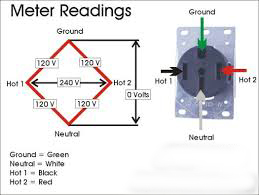Kirk
Well-known member
The 2 50A legs in the 120VAC main panel configuration requires the neutral to carry some current.
The neutral is called that because it is the center-tap of a 240 VAC home transformer. It does nothing at all on a 240 VAC circuit.
Post #13 is exactly what I would expect in a 50A supply RV
When using any properly wired, 4 pin, 50A RV outlet, the neutral will carry the difference in current between the two legs of opposite polarity. If L1 is drawing 15A and at the same time L2 is using only 10A, the difference of 5A will be returned via the neutral lead.

